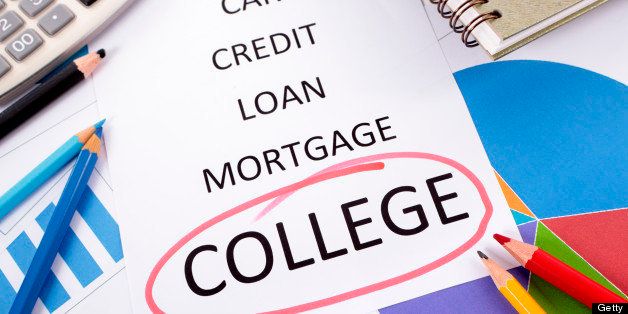
The economy and our nation's future depend on having more Americans get a college education. We should be doing all we can to encourage students to go to college.
Yet a deal being planned in the Senate would do the exact opposite, piling extra debt onto students in order to pay for the country's budget woes.
It's now been 18 days since the interest rate for subsidized Stafford student loan borrowers doubled from 3.4 to 6.8 percent. This rate hike will hit more than 7 million college students across the country with an additional $1,000 of debt per loan, on average. More than two-thirds of these students come from families that make less than $50,000 a year.
Yet now, thanks to a sneaky new deal that's being sold as a reversal of this rate hike, our country's future students could face even more expensive and less attainable higher education.
The key points of the deal:
- It will generate $184 billion in revenue for the federal government, which will come directly from students in the form of high interest and fees that will add to student debt and make education even more expensive.
- It generates an additional $715 million in revenue off student borrowers, which is specifically earmarked for deficit reduction.
- Subsidized Stafford student loan borrowers will see a low rate of 3.85 percent next year and 4.62 percent in the following year.
- However, after that the interest rates will be tied to the market. Rates will go higher than the current 6.8 percent rate within four years, though they will be capped at 8.25 percent for subsidized and unsubsidized undergraduate Stafford loans, 9.5 percent for graduate Stafford loans and 10.5 percent for PLUS loans.
Student loans should exist to invest in our future by making education affordable and accessible. Instead, this Senate deal would make these loans into a revenue scheme, getting students to foot the bill for lawmakers' self-inflicted budget crunch.
Supporters of this deal say it is the right way to go because it lowers rates in the near term for borrowers while getting as close to "budget neutral" as possible -- meaning that any extra expenses will be balanced out by extra income. But that means that any lower costs delivered to one set of borrowers must be made up with higher costs charged to another set of borrowers -- and that simple math means that plenty of students will face enormous costs. There is no other way around that reality.
Calling this plan "budget neutral" is an insult to the students who will carry $184 billion in extra debt as a result.
The deal's few concessions to students -- the interest rate caps, as well as low rates for the first two years - are no excuse. The bottom line is that this plan is a way for the Senate to solve their own budget problems on the backs of students. This is a "fix" that would make the problem of student debt worse, and hurt the future of American higher education.
Learn more about U.S. PIRG's Higher Education Project.